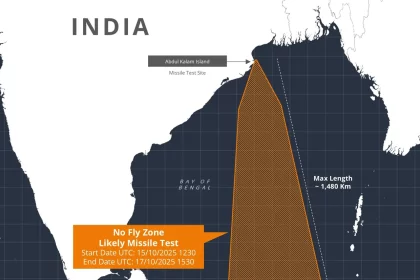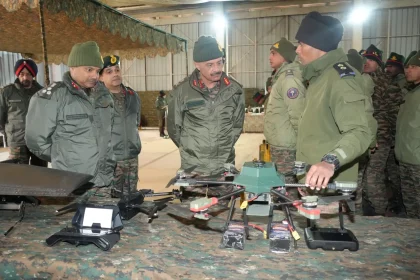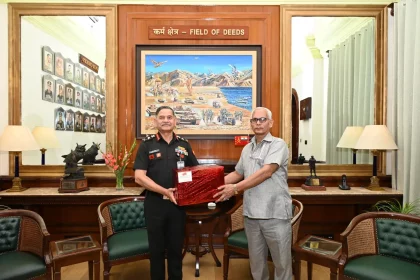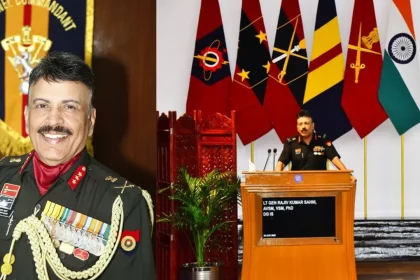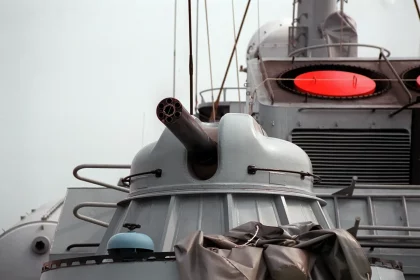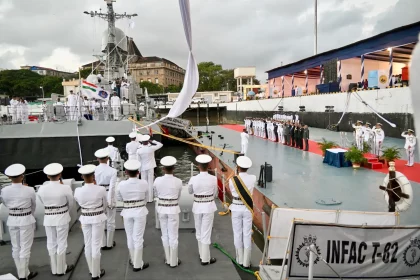India Issues NOTAM Ahead of Likely Missile Test in Bay of Bengal
Medium- or intermediate-range missile test planned in Bay of Bengal from October 15–17, following Agni-V success.
Indian Army’s Fire & Fury Corps Organises ‘Drone Yodha Competition’ in High-Altitude Ladakh
High-altitude drone competition in Ladakh highlights advanced technologies and tactical innovations.
General Upendra Dwivedi Felicitates Civil Staff for Dedicated Service and Excellence
COAS honours civil staff for decades of dedicated service, upholding Army values of discipline and pride.
Indian Army Leveraged AI During Operation Sindoor, Confirms Lt Gen Rajiv Kumar Sahni
AI tools like Anuman 2.0, ECAS, and TRINETRA played a key role in real-time analysis and mission success during the…
Indian Army to Acquire Six AK-630 Air Defence Gun Systems
Emergency acquisition to bolster India’s short-range air defence against drones and aerial threats along the western border.
INS Abhay and IN FAC T-82 Decommissioned After Three Decades of Glorious Service
After over 30 years of service, INS Abhay and IN FAC T-82 were decommissioned at the Naval Dockyard, Mumbai, marking…

